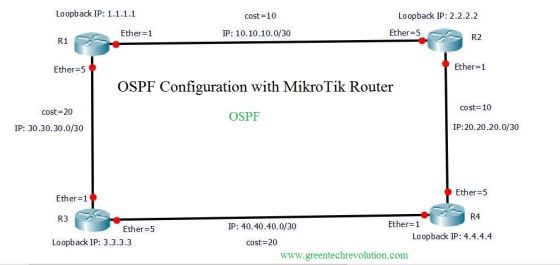Basic OSPF concept:
Open Shortest Path First (OSPF): one day I and our City Mayor we went outside with Auto Rickshaw. Suddenly rickshaw puller said that to City Mayor, sir, “I need to talk to the President. How can I meet the President? Then the Mayor asked a little angry at first, a moment later thought it was very nicely explained that many of you would like to meet with the President.
Because if president like as you talk to all person then when the President will think about the country? So if you have anything to say then that the Mayor and I will share with DC then DC will reach your speak to president thus your speak will reach to president one day. Because the president has appointed local representative for Specific area for a specific representative.
Exactly in the case of Networking if Network is large then OSPF network share many areas that are allocated Border router. Some of the areas in which all information stored in the router. So if you need any information on a specific area according to the border router.
How to Work OSPF and Protocol:
Basically (OSPF) Open Shortest Path First is a link-state routing protocol. People apply OSPF while they detect that RIP just Is not going to work for their bigger network, or while they need very fast intersection. This installation of Networking 101 will provide an abstract overview of OSPF, and the 2nd part of our OSPF coverage will turn over a bit abstruser into the protocol itself, because easily for OSPF area configurations.
Router ID: these are decided as the greatest IP address on a router, and can be set big through configuring an address on a loopback interface of the decided router. Each Router in an OSPF network requires a specific OSPF Router ID. The OSPF Router ID is used to allow a specific identity to the OSPF Router.
OSPF Router ID is an IPv4 address (32-bit binary number) designated to each router carrying the OSPF protocol.OSPF Router ID shouldn’t be modified after the OSPF action has been originated and the OSPF neighborships are founded.
Whenever you modify the OSPF router ID, we require to either recharge the IOS or use the “authorize IP OSPF technique” command, for OSPF Router ID modify to accept the force. Recharging the IOS or applying “authorize IP OSPF action” command can move an impermanent network outage.
Neighbor Routers: two routers with a common colligate that can speak to one another. Neighbor relationships are founded and observed through the rally of Hello packets. On broadcast and point-to-point network cases.
Hellos are broadcast all HelloInterval about all network cases, with single elision: On NBMA networks, a router will send out Hellos to neighbors whose neighbor state is down all PollInterval.
Adjacency: a two-way relationship between two neighbor routers. Neighbors don’t all of the time anatomy adjacencies. Adjacency is formed between deciding neighbors and allows them to substitution routing selective information. Truthful, two routers, essential 1st be neighbors, only then they can convert adjacent
LSA: Link State Advertisements are flooded. It communicates the router's local routing topology to altogether additional local routers in the same OSPF area.
Hello Protocol: Hello packets are used to detect, establish, and assert OSPF neighbor adjacencies. To build adjacency, OSPF equals at some sides of the link must concord about approximate parameters comprised inwards the Hello packet to convert OSPF neighbors. This is how routers along a network ascertain their neighbors and form LSAs.
Area: a pecking order. A adjust of routers that substitution LSAs, with others in the equal area. Areas limit LSAs and advance aggregated routes. he area ID refers to the OSPF network domain area. An OSPF area is a group of routers that contribute to link-state information. Totally OSPF routers inward the same domain area essential accept as is link-state information - received from neighbors - in their link-state databases.
You can see the video tutorial for better understanding:

Leave a Reply
You must be logged in to post a comment.